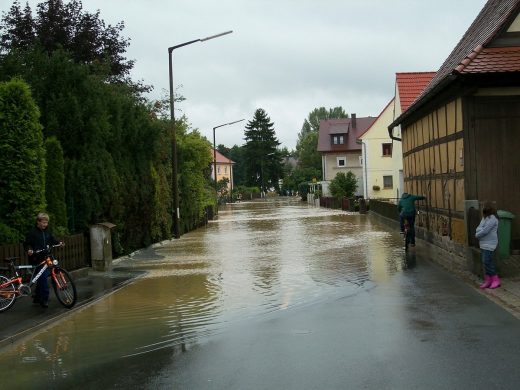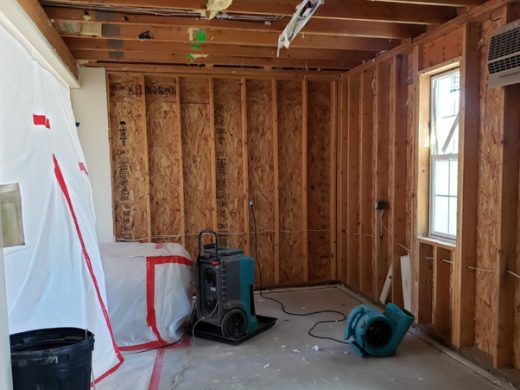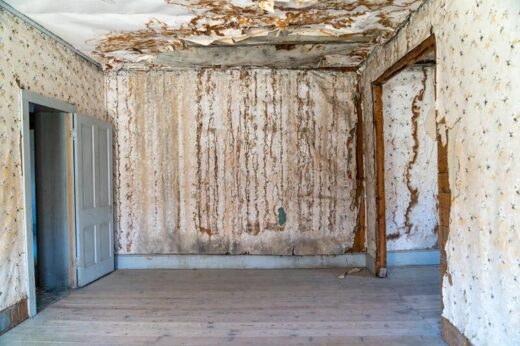Building homes resistant to flood water damage guide, Cleanup repair, Homeowner property restoration advice
Building Homes Resistant to Flood and Water Damage
4 October 2024
As occupant of a residence, flood and water damage to your precious home could cost you dearly in repairs. Understanding how to build homes resistant to such unfortunate events can save you a world of trouble in the future.
Don’t let your investment go down the drain because of unforeseen water woes. Constructing a fortified building is easier than it seems, and a little knowledge can go a long way towards ensuring the longevity of your property.
If you’ve ever dealt with the aftermath of water damage, you’d undoubtedly agree that prevention is better than cure. Learn more from the premier Water Damage Specialist about effective measures to safeguard your domicile against these watery threats.
Flood-Resistant Building Principles
To safeguard your home, developing an understanding of flood-resistant building principles is crucial. These rules provide the first line of defense against flooding.
The initial step involves elevating your home. Positioning it above predicted flood levels lessens possible damage.
Water-resistant materials are another key factor. Install these throughout your property to restrict water absorption and minimize destruction.
- Choose an optimal house location: Select areas least susceptible to flooding.
- Incorporate a pier and beam foundation: This elevates your home above ground level, offering additional protection from water penetration.
- Utilize flood vents: These special openings prevent water pressure from damaging your walls.
- Install backflow prevention:This keeps floodwater from reversing the flow in your drainage systems.
By integrating these techniques into your home’s construction, you raise the barriers against floodwaters. Such measures can also reduce insurance costs over time.
They’re simple solutions that yield long-term benefits, preserving both your home and peace of mind.
Selecting a Suitable Home Design
When it comes to building a home resilient to flood and water damage, your choice of design is paramount. Crucially, consider raised construction types.
Raised Construction
Raised constructions keep living spaces above potential flood levels. They’re synonymous with preventing water ingress, promoting easier drainage thus reducing potential damage.
Flood-resistant materials like concrete or masonry can be used in their construction to add an extra level of protection.
Sealants and Coatings
Sealants and coatings are beneficial for improving the water resistance of your walls and floors. Waterproof your basement as approximately 98 percent of homes experience some level of water damage.
These protective measures can shield your home from minor leaks and dampness. However, remember they cannot stand alone against major floodwaters.
Check Home Around
Examine the landscape around your house. Landscape grading prevents water from pooling next to your home, navigating it away, protecting the foundation.
Landscape measures are cost-effective and environmentally friendly means of managing surface runoff and improving overall aesthetics.
Choosing Flood-Resistant Materials
Flood-resistant materials are crucial when constructing homes in flood-prone areas. These materials withstand prolonged contact with water and damp conditions.
They effectively slow down capillary action, preventing the spread of moisture within your home’s structure. They protect your foundation from water inundation and damage.
Incorporating these impermeable materials in your design reduces both short and long-term water damage risks. It also dramatically cuts down on home restoration costs.
- Concrete: This material is not susceptible to decay or rust when exposed to moisture.
- High-Density Tiles: They offer reliable protection against dampness, particularly in bathrooms and kitchens.
- Stainless Steel: It is highly resistant to corrosion, making it perfect for structural elements.
- Glass Block Windows: They do an excellent job in resisting penetration by rainwater or heavy flooding.
Flood-resistant materials are a wise investment for your property’s durability, especially under the face of rampant climate change and weather extremities.
Your choice of flood-resistant materials profoundly impacts your home’s endurance during flooding events. Thus, careful selection-process can avoid future frustrations and hefty repairs.
Implementing Water Damage Prevention Techniques
Your home’s susceptibility to water damage can be significantly reduced by implementing several prevention techniques.
The first step involves inspecting your property for potential sources of leaks.
| Type of Leak | Prevention Measures | Potential Damage without Prevention |
| Pipe Leaks | Regular plumbing maintenance | Mold, mildew, and structural damage |
| Rainwater Leaks | Routine roof and gutter checkups | Ceilings, walls, and floor damage |
| Flood Water | Home elevation and flood barriers | Total loss of property, financial ruin |
| Foundation Leaks | Quality water-sealing techniques and regular inspections | Structural instability, expensive repairs |
| Quick actions can save you from severe losses. | ||
A well-maintained household lowers the risk of unexpected accidents, ensuring a safer living environment.
Diligence in implementing these preventive measures saves stress, money, and even lives in the long run.
In your journey towards a flood-proof home, value every learning experience as they contribute to your home’s resilience.
Applying Energy Efficiency in Design
When planning your flood-resistant home, remember to consider energy efficiency. A good starting point would be the adoption of a holistic approach in design.
This means integrating energy-saving technologies into your home’s structural elements. By doing so, you not only build a pretty resistant property but also conserve energy.
- Use insulated concrete forms: These create less waste and offer improved insulation, decreasing your energy usage.
- Opt for energy efficient appliances: Appliances that consume less power reduce your carbon footprint and save money on bills.
- Install modern windows: Upgrading to double or triple glazed windows keeps heat in and reduces drafts, which can save on heating and cooling expenses.
- Leverage solar power: Solar panels can provide electricity during flooding events when the main power grid may be compromised.
You might want to explore the concept of passive solar home design. This involves optimizing your home’s orientation, layout, and components to reduce energy use.
A well-designed home that’s both flood-resistant and energy-efficient can potentially provide long-term cost and environmental benefits. You can begin this journey by using available resources like the valuable tips at the U.S. Department of Energy.
Moving forward with a mindful approach towards energy efficiency in design will take you a long way in creating a sustainable, comfortable, and durable living environment.
The aim is to make sure your house remains habitable despite any adverse weather conditions. By doing this, you demonstrate responsibility to our planet while securing your future.
Making Use of Community Knowledge and Input
Whether you’re an individual homeowner or part of a larger community, utilizing communal knowledge and resources can significantly lessen the impacts of flooding.
How Can Communities Contribute Preventive Measures?
The collective wisdom of a community can help identify flood-prone areas. Their insights come from lived experiences and can be more accurate than formal assessments.
What Is The Role Of Regulatory Bodies?
Regulatory bodies formulate guidelines to promote water-resistant construction. They use science-based research to ensure structures are resilient against possible floods.
How Does Building Design Play A Role?
A well-designed house can effectively resist water damage. Consider using sustainable materials that are naturally resistant to water and elements.
Does Landscape Grading Matter?
Yes, landscape grading redirects water away from your property. A slight slope running away from the building can significantly reduce potential water intrusion.
Do Flow-Paths Contribute To Water Resistance?
Allocating paths for potential water flow during construction ensures that water is redirected effectively, preventing damaging infiltration into the structure.
Can Permeable Surfaces Help?
Permeable surfaces absorb rainwater and decrease runoff, which reduces pressure on drainage systems and lessens the likelihood of flooding.
Review and Update Building Design
Your first step is to review and update your building designs. With the increasing frequency of heavy rainfall and floods, it is necessary to integrate elements that make a home more resilient.
Flood-Resistant Building Materials
The composition of your home involves careful selection of flood-resistant materials. These can withstand water for long periods and prevent damage.
Elevate Critical Systems
Elevating critical systems such as heating or electrical installations are key. This technique keeps them safe from possible flood-induced damages.
Waterproof the Basement
Basements are susceptible to flooding. Making them waterproof can be achieved with the installation of sump pumps or use of sealants.
Slope Your Property
If it’s possible for you, slope your property away from your house. This simple trick can help protect your home from pooling water.
Proceed With Preparedness
Embracing flood-resilient home building principles empowers you to safeguard your home and community. By choosing suitable designs , flood-resistant materials, and energy-efficient technology you’re ensuring lasting protection.
Comments on this guide to Building homes resistant to flood water damage article are welcome.
Water / Floods Articles
Water / Floods Posts
Water damage from leaks: construction lawsuits

Water damage cleanup and repair service
Water damage restoration professional tips
Architects and Architecture
Architects and Architecture by Type – architectural selection below:
Comments / photos for the Building homes resistant to flood water damage – property bad weather repairs advice page welcome.










